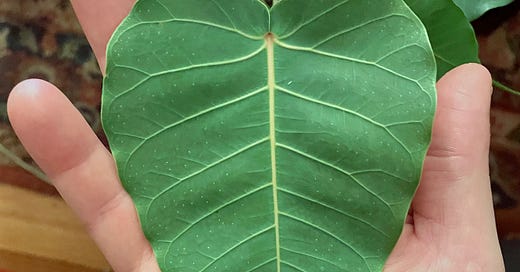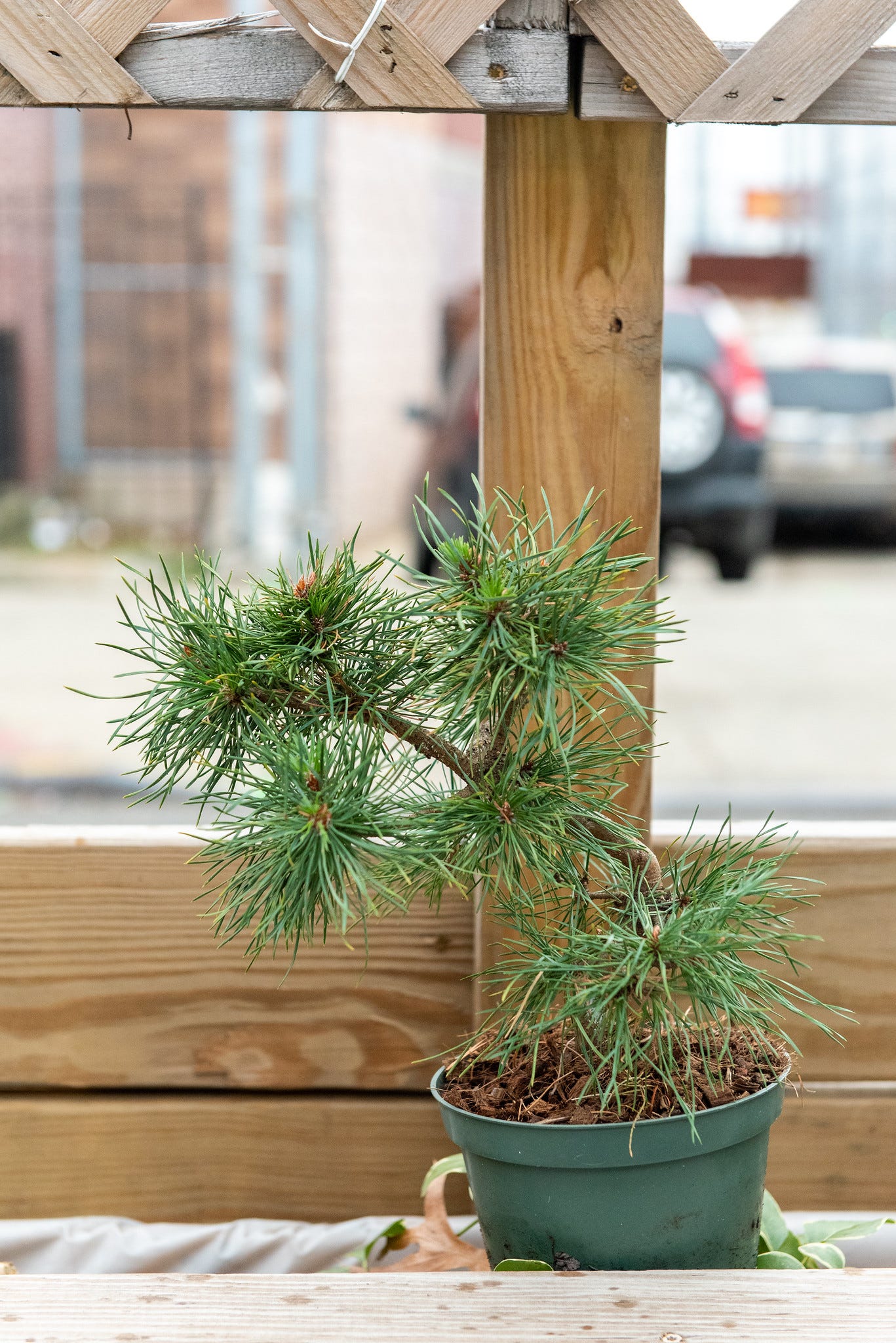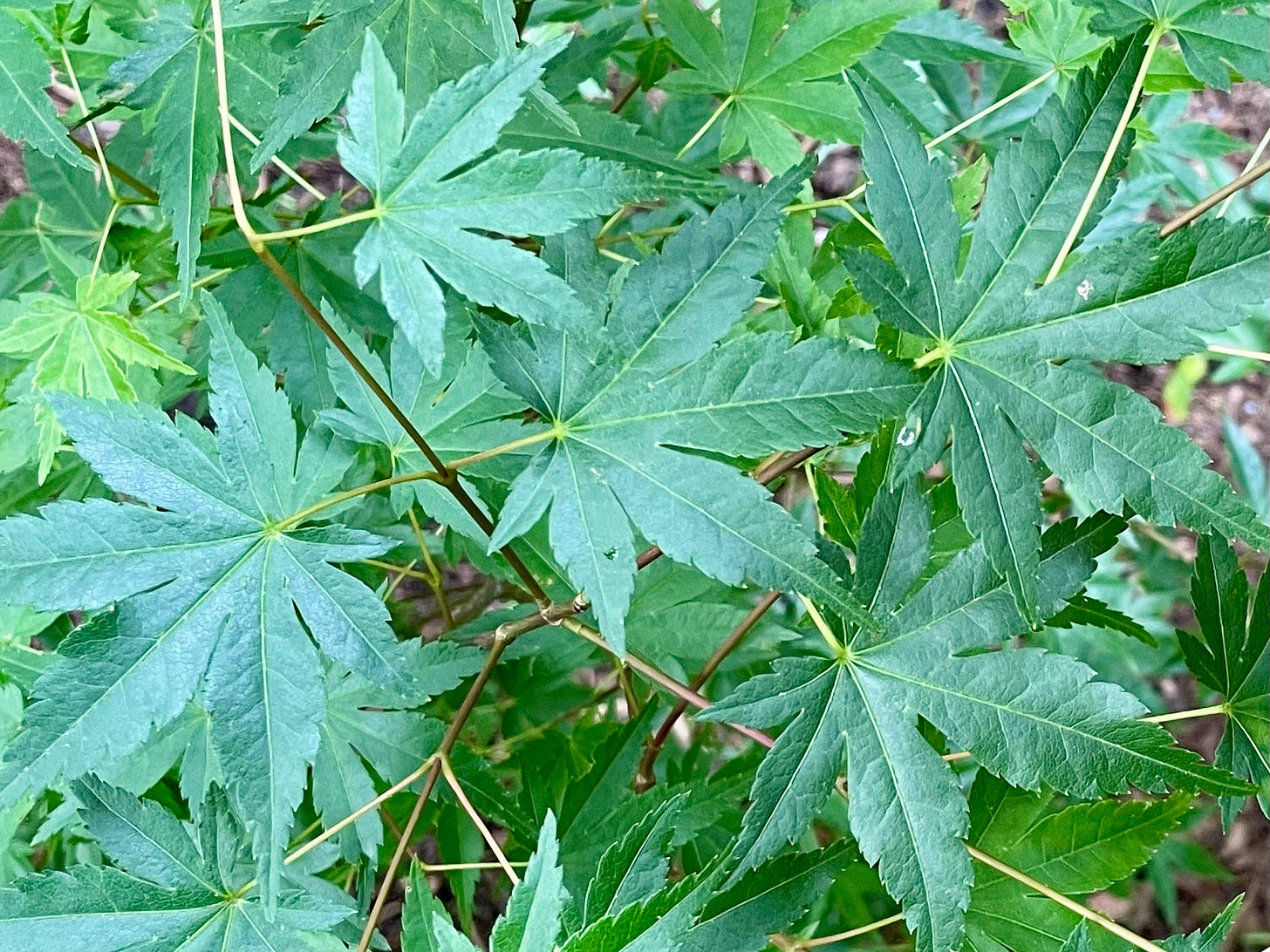At first I was all about pines and junipers. I knew I was ready to dip my toes into bonsai, and pines and junipers are the most iconic of the Japanese tradition, so I figured they were a good start. I loved their stately needles and the resinous fragrance of their sap. With sufficiently sturdy wire, their branches can be contorted into fantastic forms. That’s what bonsai meant to me at first: wrapping and bending trees with wire.
My first pines survived all of a month. My first juniper died a couple weeks later.
I’ve since learned that bonsai is as much about following a tree’s lead as dictating its path, but when you’re just beginning your bonsai practice, you may not know much about a particular tree’s habits and desires. Any vascular plant that forms a woody stem can be used for bonsai—so where does a beginner start?
The proper answer is to look up your hardiness zone and research which trees grow best in your area. But we’re not here to talk horticulture. There are better guides to selecting a bonsai from people who actually know what they’re doing. Instead I want to consider a tree’s vibes. Do I want to hang out with it? Do we get along?
After my early conifer deaths I branched out to broadleaf species. I bought an evergreen boxwood, which is grown around the world as hedge material. The rounded leaves looked boring and ordinary to me, but I grew intrigued with the hardness of its trunk, which I learned was used to make intricate religious miniatures in 16th century Europe. What boxwood foliage lacks in character it makes up with durability. The tree will recover from just about any torture you inflict. It seems to thrive on aggressive pruning.
Soon I fell in love with maples: both native North American species and the cartoonishly elegant Japanese varieties. Maple trunks are sleek and graceful. Their leaves grow in pairs along a branch, lending the tree an aesthetic symmetry.
There was a brief affair with the American hornbeam, Carpinus caroliniana, also called the ironwood tree for the rigidity of its wood. Mature hornbeams form these muscular veins along their trunks—real bodybuilder physiques. I spent weeks asking eBay sellers in the South for details on the hornbeams they sold. My first purchase was eventually refunded; the seller had moved out of his house due to what he called a “toxic roommate situation” and left the tree behind. When he snuck back under cover of darkness to retrieve it, he found that it had died. My second hornbeam purchase died on arrival due to the seller’s mishandling of the roots, which is a polite way of saying he ripped it out of its pot during the growing season and charged me an arm and a leg in shipping for the privilege. Maybe I’ll find another hornbeam in the future.
As I grow more trees indoors, I’ve gravitated toward tropical figs, which are even more indestructible than boxwoods. Figs are up for anything. You can chop off all their roots and they’ll fill a pot with new ones in weeks. My ficus religiosa sports beautiful heart-shaped leaves the size of my palm. According to Buddhist legend, a religiosa was the tree under which Siddartha Gautama found enlightenment. These sacred figs are grown around Buddhist temples, where their ample banyan canopies provide shade for worshippers in the tropical heat.
Currently I’m enjoying a moment with flowering species: citrus, camellia, pomegranate, and water jasmine. I wake up to the smell of fragrant blooms, and in moments of stress, a little time spent with their flowers brings me back down to earth. Flowering trees come with their own fertilizer challenges, and are higher maintenance than a fig or a boxwood. How much is beauty worth to you?
There were other phases, and fascinations that have stuck around. I have a thing for olives and dawn redwoods: ancient giants from bygone eras. And I still have a pine I quite enjoy, a twisty ponderosa collected in the mountains of South Dakota.
Were I starting bonsai from scratch now, I’d tell myself to focus less on buying and more on learning. But I suspect that’s trite advice, at least for myself, since I don’t think I’d be where I am now without the hands-on experience of working with those live trees, even if they ultimately died. In the tea world, this is called tuition: poor or lackluster purchases that wind up teaching you a lesson about better quality tea for the future. In bonsai, death is inevitable. Learning from it is what matters, so you can take better care of the next tree.
Tree reading
How honey bee cultivation wreaks havoc with native pollinators. [Grid, RIP]
Deeply jealous of this wearable bonsai planted in a ring. [Reddit]








"How much is beauty worth to you?" is a line I will 100% be stealing for a poem. I love learning from you, Max.